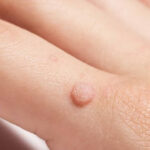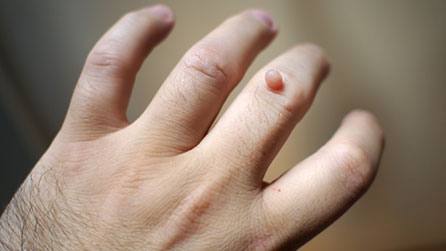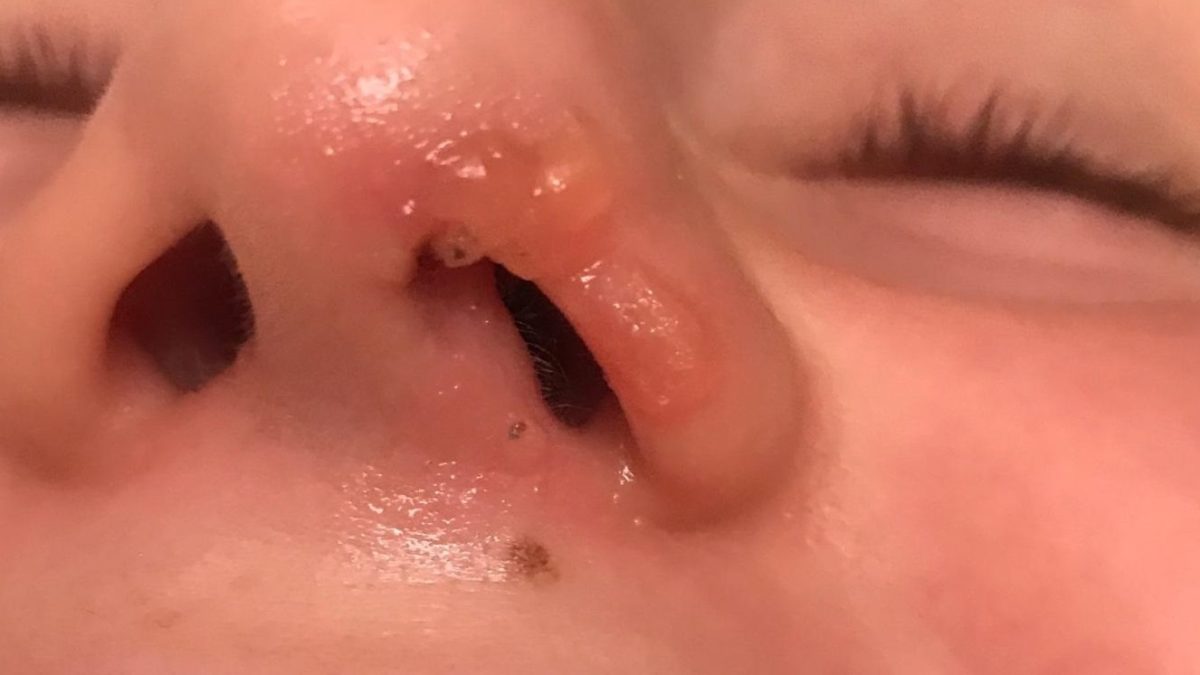
Identifying and Treating Different Types of Finger Warts: Solutions Included
February 11, 2024
The Complete Guide to Plantar Warts on Fingers: Causes and Remedies
February 16, 2024Warts are small skin growths caused by viral infections, specifically the papillomavirus. They are common, especially in childhood, but can occur at any age.
Although they are typically non-cancerous they can spread to other parts of the body and other individuals too.
Warts vary in appearance and can be painless. Warts can also form on feet where they may cause discomfort and pain while walking. About 65% of wart infections resolve without medical treatment, but some treatments carry risks such as scarring.
It is significant to discuss treatment options with a doctor and essential to understand the potential benefits and risks.
Types of Facial Warts
The most common types of facial warts are:
- Common Wart
- Flat Wart
- Filiform Wart
- Plantar Wart
Common Warts:
Common warts, also known as verruca vulgaris. They are small and grainy skin growths that typically appear on the fingers or hands. They have a rough texture and often feature tiny black dots and clotted blood vessels. These warts are caused by a virus and spread through touch.
It can take two to six months for a wart to develop after exposure to the virus. While common warts are usually harmless and may disappear independently, many people opt to remove them due to discomfort or embarrassment. They can occur on any body part, but the knees and hands are the most common sites.
Standard wart treatment includes over-the-counter medications containing salicylic acid, which gradually remove layers of the wart.
Cryotherapy, where liquid nitrogen freezes the wart, causing it to blister and fall off. Prescription medications like topical retinoids or immunotherapy. These treatments must be performed by professionals.
At Mobile Skin Screening, we offer wart removal services in the comfort of your home.
Flat Warts:
Flat warts are smaller and more balanced than other types, often appearing in groups on the face or hands.
They are caused by four different strains of the human papillomavirus (HPV).
While flat warts typically do not require treatment and may go away on their own, they can take several months or even years to resolve. These warts are usually painless and can be plentiful. They are acquired through person-to-person contact, as the virus enters the skin through small breaks. Though the virus is not highly contagious, it can be transferred by touching objects an infected person uses. Treatment for flat warts is over-the-counter medications such as salicylic acid excision, which involves cutting or scraping away the wart with a scalp burning, where the wart is removed using laser cryotherapy, which involves freezing the wart with liquid nitrogen until it falls cantharidin. This chemical causes a blister to form under the wart and lift it from the skin.
Filiform Wart:
A filiform wart is a small, narrow growth on the skin, often whitish or yellowish in color, typically found on the face.
It is caused by the human papillomavirus (HPV) and spreads through skin-to-skin contact. These warts have a distinctive appearance with long, thin projections of skin. While they are harmless and may disappear without treatment, many individuals prefer to have them removed. Removal is often best done by a doctor to avoid complications. Treatment options include medications, home remedies, and professional removal methods. Cantharidin: Your doctor will “paint” cantharidin over your wart. This causes a blister to form under the wart, so it dies. After a week, your doctor can remove the wart by cutting it. This treatment may only be available or work for some.
Plantar Wart:
Plantar warts, officially known as verruca or plantar warts, are noncancerous skin growths caused by a viral infection, specifically the human papillomavirus (HPV). They typically appear on weight-bearing feet areas, such as the heels or balls. Plantar warts can cause discomfort, especially when walking or standing, and may grow inward beneath a thick layer of skin.
While not usually a serious health concern, they are contagious and can spread. Treatment options include self-care measures or seeking advice from healthcare providers, such as podiatrists, mainly if they cause pain or discomfort. Most plantar warts can resolve without treatment, especially in children under 12, but seeking treatment can expedite their removal.
By reviewing this guide, you can understand the classifications and characteristics of facial warts. Regardless of the type of wart, you must not attempt to treat it on your own; instead, contact professionals. Contact us today!
Frequently Asked Questions
Do warts always come back after treatment?
Warts may sometimes recur after treatment, especially if the virus remains in the body. However, proper treatment can help to reduce the likelihood of recurrence.
Are warts contagious?
Yes, warts are contagious. They can spread through skin-to-skin contact or by sharing personal items such as towels or razors with someone who has warts.
Can I prevent warts?
While it’s not always possible to prevent warts, you can reduce your risk by practicing good hygiene, avoiding direct contact with warts, and avoiding sharing personal items with individuals who have warts.
Can warts be a sign of a more serious condition?
Warts are usually harmless and do not indicate a more severe condition. However, in rare cases, certain types of warts may be associated with an increased risk of certain cancers, particularly genital warts caused by certain strains of HPV or when warts start bleeding.

